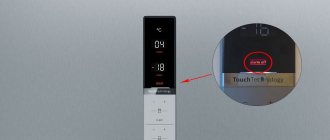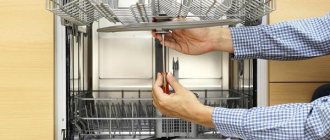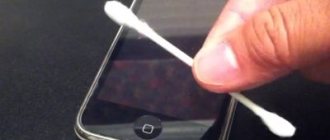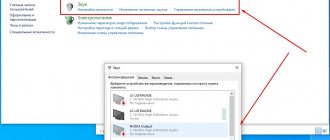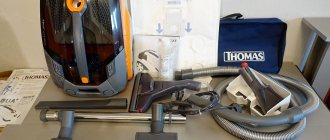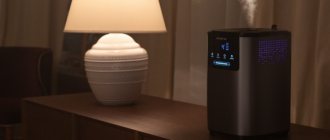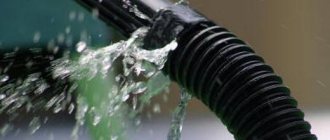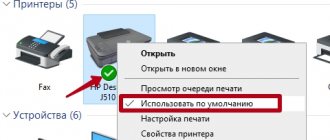The characteristic wheezing of speakers in a car is a fairly common problem that can be easily eliminated if you understand where to look for the cause. For this it is necessary,
- first, “calculate” exactly which (which) of all the speakers in the cabin are working with distortion.
- Secondly, determine at what volume the wheezing appears - at maximum, increased or any volume.
- Thirdly, based on these factors, look for the cause in the places described below.
How to identify wheezing car speakers
Sound distortion in the form of unpleasant wheezing can appear both in all speakers in the cabin, and in just one of them. At the first stage of troubleshooting, it is extremely important to establish this. There are several ways to do this. Let's look at the two most understandable and simple ones.
The first method is to mute the speakers one by one using the car radio settings menu. Even in cheap Chinese options, this feature is usually provided. It is implemented in the form of balance and fader adjustment. Referred to as the BAL and FAD settings, respectively.
Balance is an adjustment of the car radio that allows you to distribute the power of the amplifier built into it between all the right and left speakers. That is, if you twist (press) BAL in one direction or the other, you can completely muffle all the sound from one side of the cabin. For example, if you turned the balance completely to the right or left, and the wheezing of the speakers disappeared, then it now becomes clear whether it is on the left or right relative to the interior.
However, this is still not enough. With the help of balance, you can only determine the side of the speaker that is causing distortion. However, on the one hand there are at least two of them. To figure out whether the front or rear is wheezing, adjusting the fader (FAD) can help. This adjustment redistributes the car radio's output power between the front and rear speakers.
Example. Let's say that after adjusting the balance, it turned out that the wheezing disappeared when all the power was shifted to the right side. In this case, you now need to reconfigure the balance completely to the left. The wheezing will return. Next, using the fader settings, you need to alternately direct all the power to the front left and rear left speakers.
After playing with just these car radio settings, you will definitely figure out the speaker that is wheezing. But only if there are only four of them in the cabin. If there are two or more speakers on any of the four channels, this complicates the situation. And you can get out of it by using the second diagnostic method.
It consists in alternately physically disconnecting the dynamic heads from the signal wires. In this case, you will have to disconnect not from the car radio, but directly from the speakers themselves. The task is to find a speaker, after which, when turned off, the wheezing will disappear. This method, by the way, will help if the radio does not have the settings described above (as a rule, balance adjustment is available on all models, but FAD is not always available).
The next step is to understand at what volume level a wheezing speaker wheezes. Distortion can occur both at maximum volume and at minimum volume. In the process of calculating a faulty speaker, it is very desirable to establish this point. This will be useful for further diagnosis.
The speaker crackles in the bass
Nothing saddens a car enthusiast on the road or a music lover when listening to his favorite tracks more than the sudden appearance of wheezing in the audio system. At the same time, it is often quite difficult to determine the reason why the speakers wheeze in completely new acoustics.
Causes
Wheezing can appear in the speakers at virtually any intermediate stage of signal processing. The main task in this case is to identify the source of malfunctions in the sound system, finding the problem area that is causing the speakers to wheeze. What to do if the faulty unit is successfully identified will depend on the cause of the breakdown and the nature of the damage.
In most cases, the speakers begin to wheeze due to the amplifier. The wheezing is then just audible nonlinear distortion. These distortions occur due to insufficient bias of the amplifier element when it is introduced into the linear mode in which the amplifier chip operates.
Without special knowledge of electronic microcircuits and skills in working with a soldering iron, it is problematic to fix the problem yourself in this situation, and therefore you should take the wheezing speaker to a service center.
Speaker wheezing and hissing
Motorists often encounter a situation where a speaker or the entire acoustic system wheezes. Most complaints come immediately after installing new speakers or a radio in a car. Sometimes the problem is solved in the simplest way.
The fact is that some people perceive the hissing of audio system speakers as wheezing. They observe, turning the radio knob in the car, that when the volume is increased, the speakers wheeze, although in reality they emit a strong hiss. If it can be heard from all connected speakers, then the reason is most likely due to poorly compatible speakers and radio. This usually happens when the amplifier power is too high relative to the speaker system.
Correspondence between speaker and amplifier power
It is worth noting that the average car radio produces 45-55 W of power. Car speakers have a power rating of about 20-40 watts or more. As a rule, manufacturers prefer to indicate the peak power of speakers or RMS watts on boxes and in product cards. To obtain the real value, the declared value must be divided by approximately 10. That is, typical 300-watt speakers actually produce about 30 W of nominal volume. All this applies to household computer speakers.
Diagnosis of wheezing speakers
You should first analyze situations in which extraneous noises, overtones and wheezing are heard. Only after this can you understand why the speakers or individual speakers wheeze. First you need to answer two basic questions to localize the fault:
- Is one speaker wheezing or all at once?
- Is wheezing best heard at maximum or minimum volume?
Wheezing in one speaker or all speakers
The simultaneous wheezing of all speakers is either due to incorrect selection of the amplifier (described above), or the problem lies in poor contact, poor-quality wires or a worn-out connector on the radio. The latter is possible when all speakers are connected through one input. It is also possible that all speakers may fail at the same time, but this is unlikely.
If only one speaker wheezes, then it is worth checking the contacts for corrosion and the connector on the radio. The wire and the quality of contact with the connector are tested in the same way. A quick way to test a speaker is to replace it with a known good one. If the wheezing disappears, the old speaker will have to be replaced or repaired.
Wheezing at minimum or maximum volume
The reason why a speaker wheezes at minimum volume almost always lies in the speaker itself. Often the wires from the terminal to the coil break off or fray during use. Due to poor contact, wheezing occurs, which can only be eliminated by soldering new wires. It is important to note that they must be exactly the same in cross-section.
At maximum volume, most problems occur at the audio amplifier output. Distortion in the form of wheezing appears under heavy load. The amplifier cannot cope with it due to a broken capacitor, which must be replaced with a new one. Another reason could be moisture getting into the speaker surround. Replacing a suspension that has become stretched due to moisture is also acceptable. The third reason for wheezing at high volume levels is considered to be dirt in the speakers. To repair, you need to remove the suspension and diffuser, and then carefully blow out the speaker with a compressor.
These are just the most basic reasons why speakers wheeze. If these manipulations do not lead to a positive effect, then the speakers cannot do without a professional inspection at a service center.
Source: https://starifaeton.ru/info/kolonka-treshhit-na-basah/
Wheezing in one speaker
If wheezing occurs in car speakers, you need to try to determine exactly how many sources of extraneous sound there are. It often turns out that only one device is breathing, while all other speakers continue to function normally as usual. The culprit for this situation could be the car stereo itself, the speaker itself, or the cable with which it connects to the car's electrical network. Therefore, a logical question arises here: how to eliminate the wheezing of the speakers in the car. The solution largely depends on the source of the problem.
Amplifiers used in modern car audio systems often include 4 independent amplifiers. Previous versions use 2 amplifiers, and the very first models use only one. Thus, it is possible that wheezing is provoked by only one of them, while the remaining elements perform their functions efficiently. To check this, simply connect another speaker that you are sure of its functionality. If the new speaker also hisses, it means that the problem is covered by the radio or wiring.
When installing a speaker system for the first time, it is not that difficult to damage its wiring. This usually happens when the installation is not carried out by a specialist, but by an amateur who does not have the proper experience and knowledge. Also, the integrity of the wiring may be damaged during operation. At first this does not manifest itself in any way, but gradually abrasions form, the quality of contacts is impaired and corrosion occurs. This leads to sound distortion, which the driver hears in the form of wheezing. If the malfunction is related to the radio, then it is best to contact a specialist.
Sometimes repairs are very inexpensive, and the problem is solved in a matter of minutes. But when the device has already expired or was initially of poor quality, the best way out of the situation is to replace it. Speakers and amplifiers will remain in place. Only the unit installed on the front panel of the car will change.
Wheezing at low volume
It seems obvious that the sound system will produce wheezing at maximum volume, since the equipment is subjected to enormous stress and sometimes simply cannot withstand it. But what a surprise it is for motorists when car speakers hiss when the radio is played at minimum volume. Here are some suggestions as to why one or more speakers are breathing heavily in this situation and what to do. Practice clearly shows that very often the column itself is to blame.
Small-volume wheezing occurs due to breaks in the flexible electrical wires connecting the terminals and coils. In addition, fractures are most often located directly near the welding site. To accurately test for this type of wheeze at a low volume, simply touch the threads. If you move the wiring a little and return full contact, the wheezing will immediately disappear. But constantly holding the thread with your hand is definitely not an option.
you need to get to the broken wire and secure it properly by soldering and using electrical tape. If the wiring near the terminal breaks, the easiest way is to cut off part of the damaged wire and put a new one in its place.
There is another option for dealing with wheezing. To do this, you can solder the wiring to the tweeter from below. This will create a fixed connection. It is less susceptible to wear and therefore less likely to break. The disadvantage of this method is that the wiring will remain visible after installation. Here everyone decides for themselves how best to stage it.
Knowing exactly what to do when the speaker in your car chokes, don’t rush into DIY work. Not everyone knows how to weld or operate welding equipment. It is also necessary to select a wire that is suitable in terms of characteristics and cross-section. By using incorrect wiring, you risk causing a short circuit and completely destroying your car's entire audio system. If you do not have the proper experience and knowledge, it is best to turn to professionals who specialize in installing and repairing car audio. You will have to pay for their services, but you will receive a guarantee of quality. In addition, the technician will additionally check the operation of the system for other possible malfunctions. However, achieving perfect sound in a car is not easy.
